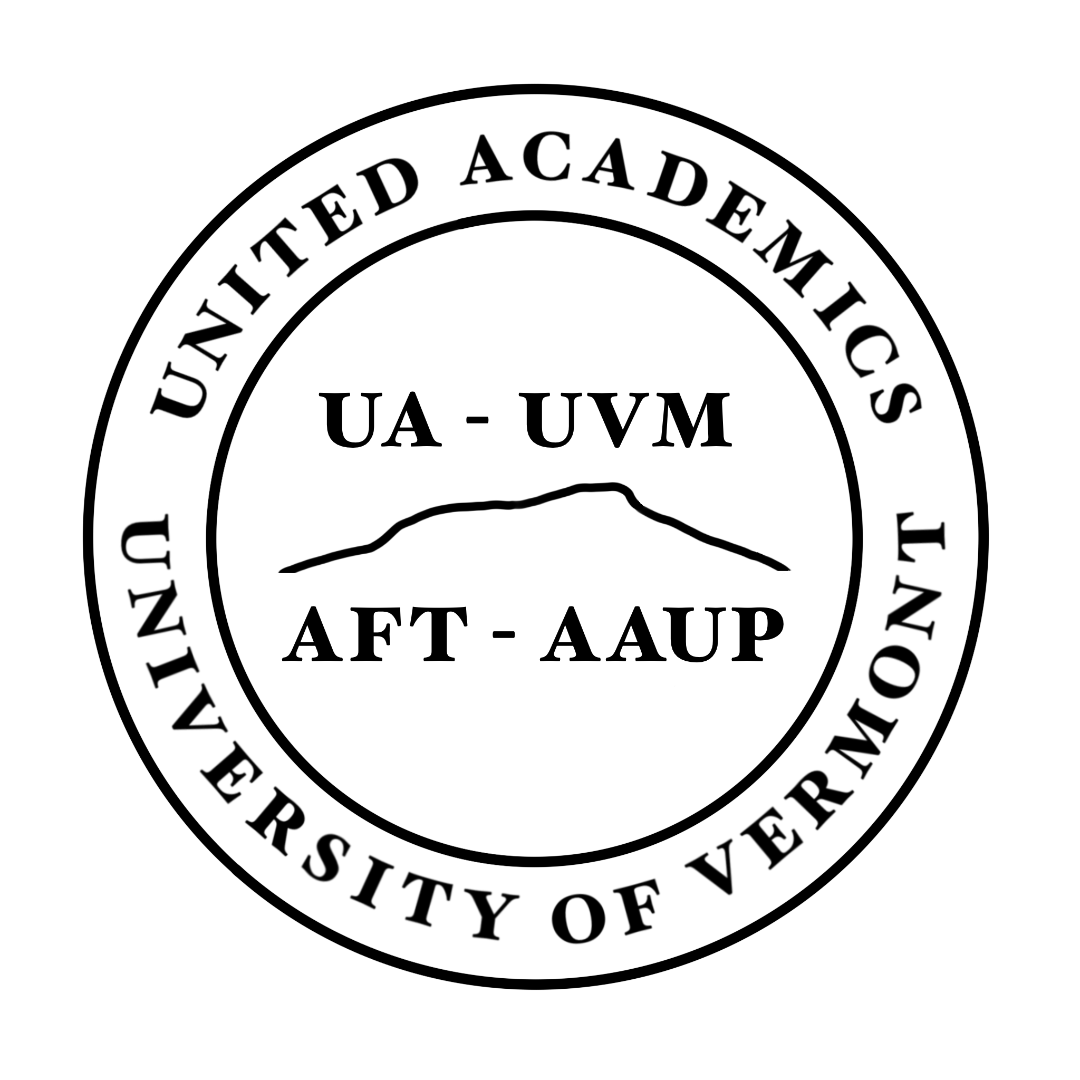Dear colleagues,
UVM’s administration and United Academics concluded the fact-finding hearing Monday afternoon, Feb. 13th. Both sides have until March 23rd to submit written briefs and rebuttals to the factfinder, who will then issue a report some weeks after that, containing recommendations based on the information submitted by both sides.
The effect of the hearing will not be known until the fact finder report is issued, but in my estimation, it went well. There were three of us for UA: Chief Negotiator Julie Roberts, UA’s lawyer, Tom Somers, and myself. In addition, AAUP’s financial consultant, Howard Bunsis, presented a report in a video call. Roughly ten members of upper administration were in attendance throughout the day. Our graphs were not printed in color, but, otherwise, I think our materials were compelling, sometimes more so than theirs.
Our case boiled down to two core points: 1) the University of Vermont is in good financial health and can afford to give its faculty a competitive raise, and 2) relevant comparison groups in-state and nationally make it clear that the administration’s offer threatens UVM’s ability to recruit and retain qualified faculty which are, in turn, necessary to attract the students and tuition dollars that keep UVM competitive and able to fulfill its public mission.
Today, I can share two small pieces of our submission.
First, attached below are two tables from our materials. The first shows a complete list of the 41 public research universities in the “higher research university” category included in the Oklahoma State (OSU) salary survey, the survey upon which the administration bases their claim that “UVM faculty are at 104%” of national averages. As the table shows, UVM is one of only six schools in the OSU survey which place in the top 100 of the US News and World report annual rankings, and over half of the institutions listed are more than 100 places below UVM in national rank. Based on our national standing, we should be paid much more than 104% of the average of that particular group. The second table lists the top six schools that students chose over UVM (from a document called “Knowing our Competitors” released last week by UVM’s Enrollment Management office). All of them have considerably higher faculty salaries than UVM.
As a reminder, we do not want to engage in a pointless contest of anecdotes and cherry picked data with the administration. As I’ve noted before, these bits of information should be understood as snap shots of a much broader set of trends, which we discussed more richly in our Feb. 1 forum. I hope, eventually, we can share with you the details of the many “exhibits” we submitted Monday, and the fuller picture it provides.
That full picture is why we also discussed the more subtle issue of the difference between long-term reputation and short-term marketability. Reputation has real financial impact. Middlebury College charges a higher tuition than St. Michael’s College, not because it has nicer amenities, but because it has a more prestigious reputation. One of the constant tensions in managing higher education, however, is that reputations develop slowly, over decades. Over the period of a few years, reputations are experienced by administrators as static. Enrollment managers and administrators thus tend to focus more on factors that influence attractiveness to potential students among schools that, at the moment, have similar reputations: when a student has narrowed their choices to a few similar colleges, things like a better dormitory or sports facility indeed might swing them towards one school or another. Administrators are thus pressured to spend money on things that might influence short-term marketability rather than the longer term, but no less real, factor of reputation. Administrators are prone to look at salary increases, which build in costs extending out into the long-term future, as limitations on their discretion to address short-term marketability, rather than an investment in the university’s future viability.
Yesterday, we made the case that UVM can, and in the long-term interests of the university should, invest in its faculty.
Profound thanks to all who helped prepare our case, especially Steve Finner, negotiating team members Erica Andrus, Julie Roberts, Sean Witters, and Dan Krymkowski, and our fact finding faculty consultants Joe Kudrle, Jane Knodell, and Beth Mintz.
As always, please feel free to contact me about these or any other issues.
Best,
Tom Streeter
President, United Academics
thomas.streeter@uvm.edu
P.S. More information:
http://www.unitedacademics.org/facts-about-uvm-spending/
http://www.unitedacademics.org/ibb-101/
http://www.unitedacademics.org/s/Dear-Cynic-editors.pdf
https://www.uafaircontract.org/
